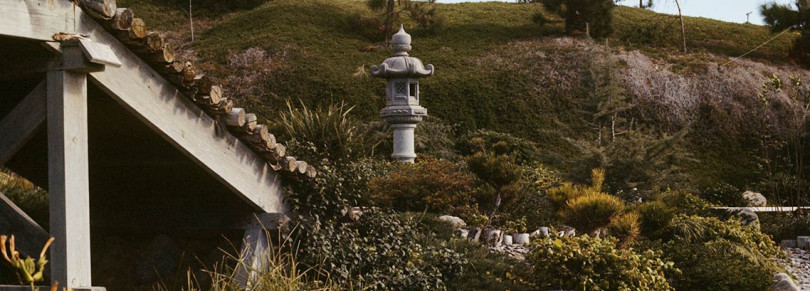
Photo of the eight-foot Kasuga stone lantern established in the traditional Japanese garden at Dodger Stadium, Los Angeles and given to Dodger President Walter O’Malley by Sotaro Suzuki, a sports columnist and a member of the Japan Baseball Hall of Fame.
Feature
Stone Lantern is Focal Point of Traditional Japanese Garden at Dodger Stadium
When famous sports columnist Sotaro Suzuki and his wife, Toku, were invited by Los Angeles Dodgers owner Walter O’Malley and his wife Kay to attend the Grand Opening of Dodger Stadium on April 9, 1962 (one day before the official Opening Day), he wanted to express his appreciation with a special gift.
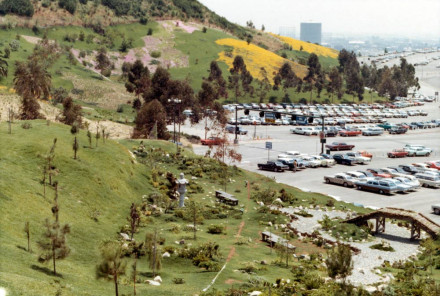
The lantern was the centerpiece for a traditional Japanese garden that was designed and maintained by Mitch Inamura and contained two cherry blossom trees, river-rock paths and pine trees cut Japanese-style. When Dodger Stadium opened, Inamura was hired by O’Malley to design, install and maintain not only the traditional Japanese garden but other landscaping projects on the grounds.
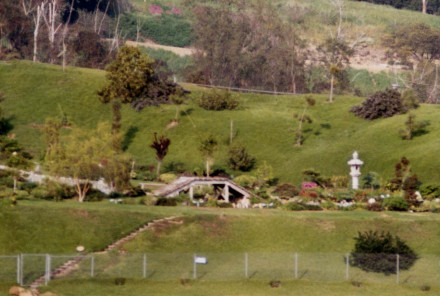
The lantern was placed on a hill adjacent to Parking Lot 37. The inscription on the back of the lantern base reads, “To commemorate the opening of Dodger Stadium on April 9, 1962. Donated by Sotaro and Toku Suzuki, Guests.” The Dodgers held an opening ceremony for the public on April 9 and played the first game against the Cincinnati Reds the following afternoon.
Upon returning to Japan, Suzuki saw a photograph of a stone lantern at a friend’s home and decided that would be the perfect gift to send to O’Malley. In 1965, Suzuki contacted the famous stone-carving business in Aichi prefecture, Shimizugumi Stone Works Company to build the stone lantern, which was sculpted in Okazaki City, near Nagoya.
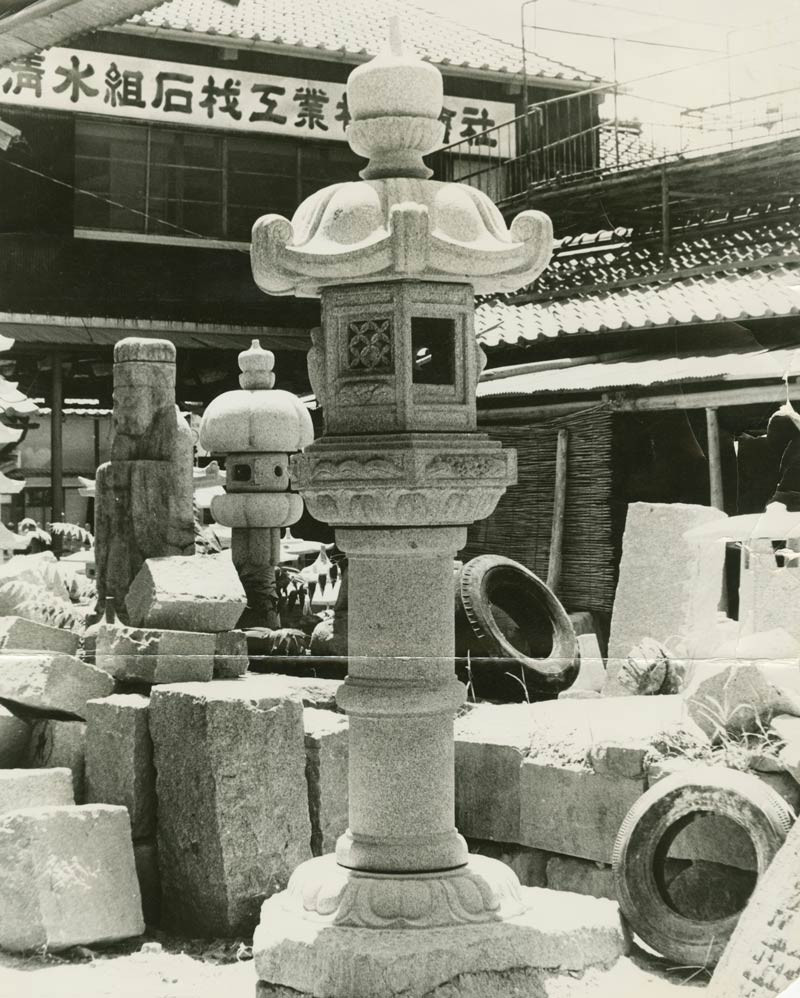
The 8-foot tall, 3,921-pound stone lantern built by the Shimizugumi Stone Works Company before being shipped to the Dodgers in the winter of 1965.
The eight-foot tall, 3,921-pound “Kasuga” stone lantern was shipped to Los Angeles in six sections in the winter of 1965. O’Malley had the impressive piece placed on the hill adjacent to parking lot 37 at Dodger Stadium and it became the centerpiece for a traditional Japanese garden that was designed and maintained by head landscaper Mitch Inamura. The garden, at that time, contained two cherry blossom trees, river-rock paths and pine trees cut Japanese-style. The garden would fulfill Suzuki’s desire to provide a tranquil setting for all Dodger fans as an expression of goodwill.
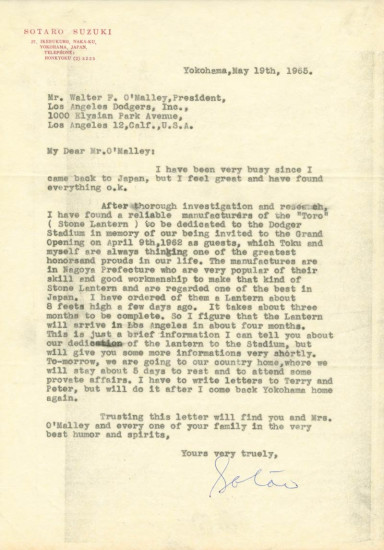
Letter from Sotaro Suzuki to Walter O’Malley, May 19, 1965
Suzuki wrote the inscription on the back of the lantern base: “To commemorate the opening of Dodger Stadium on April 9, 1962. Donated by Sotaro and Toku Suzuki, Guests.”
Suzuki was the confidante and special advisor to Matsutaro Shoriki, the founder of Yomiuri and the “father of professional baseball in Japan”. Suzuki coordinated with O’Malley the Dodgers’ 1956 Goodwill Tour to Japan, which consisted of 19 games, for the sponsoring Yomiuri Shimbun. Suzuki was inducted into the Japan Baseball Hall of Fame in 1968, as a sports columnist and longtime goodwill emissary between Japan and American baseball. In the winter of 1955-56, Suzuki traveled to New York to meet with O’Malley to invite the Dodgers to visit Japan following the 1956 season and postseason. Suzuki coordinated with O’Malley the Dodgers’ 1956 Goodwill Tour to Japan, which consisted of 19 games, for the sponsoring Yomiuri Shimbun. To continue the friendship, O’Malley invited Suzuki, the Tokyo Yomiuri Giants manager and two players to stay at Dodgertown, Vero Beach, Florida for 1957 Spring Training. Suzuki was also integrally involved with arrangements for the 1966 Dodgers’ Goodwill Tour to Japan.
View letter from Sotaro Suzuki to Walter O’Malley on May 19, 1965.
Throughout the 1990’s, local resident Frank Ego made regular weekend visits to the Japanese garden to care for it and help maintain its beauty and importance. As a longtime avid reader of Suzuki’s columns, Ego had the opportunity to meet him in Japan. The two regularly corresponded for many years.

